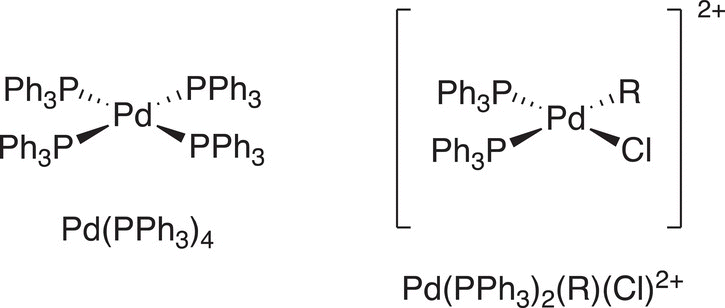Organic Chemistry: Concepts and Applications - Headley Allan D. 2020
Catalytic Carbon—Carbon Coupling Reactions
19.1 Introduction
The use of transition metals in organic chemistry has increased over the years, especially for the synthesis of new carbon—carbon bonds. You will recall that transition metals are in the middle of the periodic table and they have partially filled d and f orbitals. There is a wide variety of groups called ligands that are typically coordinated to transition metals. As a result, transition metals that have ligands coordinated to them are referred to as coordination compounds or coordination transition—metal complexes. The groups that are coordinated to transition metals are sometimes neutral, such as ammonia and triphenylphosphine (PPh3) or fully charged anion, such as the chloride anion. They are all Lewis bases in that they all have at least one unshared pair of electrons. Examples of different coordinated palladium ion complexes are shown below.

In this chapter, we will examine the reactions involving various transition—metal complexes and the mechanism by which they catalyze various carbon—carbon bond forming reactions. As we have seen throughout our course in organic chemistry, often times, there is the need to make new carbon—carbon bonds to achieve the goal of synthesizing larger target molecules from smaller molecules. The difficulty encountered in accomplishing such a task is that carbons of a carbon—carbon bonds are of comparable electronegativity, and there are not many options whereby the strategy of using a nucleophile to react with an electrophile to make a new carbon-carbon bonds can be used. In this chapter, we will examine a new strategy of synthesizing new carbon—carbon bonds in which different coordination transition—metal complexes are used as catalysts for these carbon—carbon bond forming reactions.